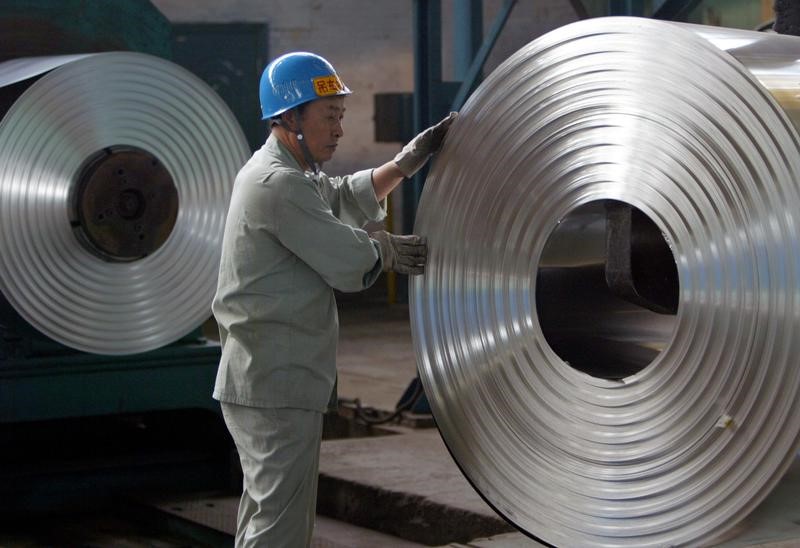By Maytaal Angel
BRUSSELS (Reuters) - Global steel demand growth is expected to slow to 1.6 percent next year, after strong growth in 2017 driven by demand from top consumer China, the World Steel Association (worldsteel) said on Monday.
Demand will reach 1.648 billion tonnes next year, up from 1.622 billion tonnes this year, worldsteel said. The 2017 figure corresponds to nominal growth of 7 percent and underlying growth of 2.8 percent.
"The risks to the global economy ... have to some extent abated. We see the best balance of risks since the 2008 economic crisis," worldsteel said in a statement at its general assembly in Brussels.
However, it added: "In 2018 we expect growth to moderate, mainly due to slower growth in China."
The steel industry, worth about $900 billion a year, is a gauge of the world's economic health. Average global prices have climbed some 50 percent since the 12-year lows of December 2015, according to consultants MEPS.
China this year closed most of its outdated and in many cases illegal induction furnaces, a category not previously captured in official demand statistics, hence the one-off effect on nominal versus underlying demand.
Worldsteel expects demand in China to reach 765.7 million tonnes this year and next. The 2017 figure corresponds to nominal growth of 12.4 percent this year and underlying growth of 3 percent, worldsteel said. Next year, however, China's demand will be flat.
Worldsteel, which represents more than 160 steelmakers accounting for 85 percent of global production, had forecast in April that global demand would grow just 1.3 percent in 2017 and 0.9 percent in 2018.
"Progress in global steel markets this year to date has been encouraging. We have seen the cyclical upturn broadening and firming ... " said T.V. Narendran, chairman of the worldsteel Economics Committee.
Future prospects are less encouraging, though, especially in the longer term.
"The lack of a strong growth engine to replace China and a long-term decline in steel intensity due to technological and environmental factors will continue to weigh on steel demand in the future," worldsteel said.
Demand in India, the world's third-largest steel consumer and the industry's best hope after China, is expected to grow just 4.4 percent this year and 5.7 percent next year, compared with an April forecast of 6.1 percent and 7.1 percent, respectively.
On the plus side, excess capacity is being reduced, thanks largely to China's cuts, worldsteel director general Edwin Basson said at the general assembly.
"There's ample evidence that over a two-year space China will have closed capacity similar to total U.S. capacity and on top of that comes the induction furnace closures," Basson said .
"There's (still) enough capacity globally to satisfy demand for the next 20 years (but) we're positive because the G20 (Global Forum on Steel Excess Capacity) is looking at this and there's good co-operation between all member countries."

Official figures from China show it has cut nearly 100 million tonnes of legal steel capacity and 120 million tonnes of illegal induction furnace capacity since the start of last year.